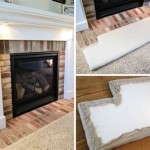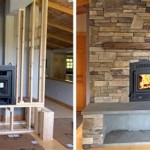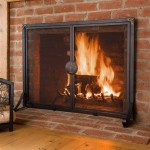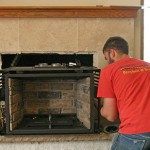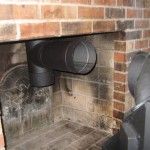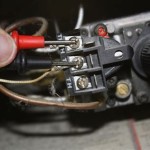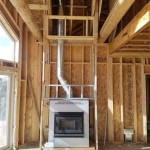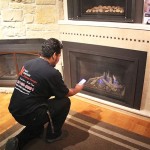Fake Stone for Fireplaces: A Guide to Choosing the Right Materials
A fireplace, whether traditional or modern, can be a stunning focal point in a room. However, building a fireplace from real stone can be expensive and labor-intensive. Fortunately, there are numerous alternatives available. Fake stone, also known as faux stone, offers a cost-effective and versatile solution that mimics the look and feel of natural stone without the hefty price tag or complicated installation process. This article will delve into the world of fake stone for fireplaces, discussing various types of materials, their benefits and drawbacks, and key factors to consider for your fireplace project.
Types of Fake Stone for Fireplaces
Fake stone for fireplaces is available in a wide range of materials, each with its unique properties and aesthetic appeal. Here are some popular choices:
1. Manufactured Stone Veneer
Manufactured stone veneer is a popular option for fireplaces due to its realistic appearance and ease of installation. These panels are made from lightweight materials like concrete, polyurethane, or fiberglass, which are molded to resemble natural stone. The versatility of manufactured stone veneer allows for different textures, colors, and sizes, effectively replicating the look of granite, slate, brick, or other natural stone. The lightweight construction also allows for easier installation, often with adhesive bonding rather than requiring additional structural support.
2. Stone-Look Tile
Stone-look tile provides a more affordable and lightweight alternative to manufactured stone veneer. These tiles are crafted from ceramic or porcelain, with advanced printing technology used to replicate the intricate details and color variations of real stone. The tile format offers a range of sizes and shapes, allowing for creative designs and patterns. Installation is typically simpler than stone veneer, using standard tile adhesives and grouting techniques.
3. Polymer Stone
Polymer stone is a relatively newer material that offers a lightweight, durable, and water-resistant option for fireplaces. This material is often referred to as "faux stone veneer" and is made from a composite of polymers and fillers. It comes in a wide array of colors and textures, resembling natural stone, brick, or even wood. Polymer stone is particularly popular for its resistance to moisture and the ease of cleaning, making it an ideal choice for areas prone to spills.
Benefits of Using Fake Stone for Fireplaces
Choosing fake stone over real stone for your fireplace offers several advantages:
1. Cost-Effective
Fake stone is considerably more affordable than natural stone. The cost savings can be significant, particularly for large projects. This is because the manufacturing process for fake stone is more efficient and less labor-intensive compared to quarrying and processing real stone.
2. Easier Installation
Fake stone materials are generally lighter and easier to install than real stone. This makes the installation process quicker and less demanding, often requiring less specialized labor. The ease of installation also allows for DIY projects, potentially saving further costs on labor expenses.
3. Versatility and Design Flexibility
Fake stone offers a wide array of styles, textures, and colors, allowing for greater design flexibility. You can replicate the look of various natural stone types, from rustic to modern, to suit your specific aesthetic preferences. Additionally, fake stone allows for more intricate designs and patterns, which can be difficult or impossible to achieve with real stone.
Considerations for Choosing Fake Stone
When selecting fake stone for your fireplace, consider the following factors:
1. Aesthetics
The most important consideration is the aesthetic appeal of the fake stone. Choose a material that complements your existing decor and fireplace style. Consider the color, texture, and size of the stone to ensure it integrates seamlessly with the overall design of your room.
2. Durability
While fake stone is generally durable, different materials offer varying levels of resistance to heat, scratches, and stains. For areas near the fireplace, look for heat-resistant options and materials that are easy to clean. If you have pets or young children, consider materials that are resistant to scratches and impacts.
3. Installation Requirements
The installation process for different fake stone materials can vary. Some materials require specialized installation techniques or additional support, while others are easier to handle and install as DIY projects. Assess your capabilities and resources before choosing a material.
4. Maintenance and Cleaning
The maintenance requirements for fake stone can vary depending on the chosen material. Some materials are low-maintenance and require minimal cleaning, while others may require specialized cleaning products or techniques. Consider your lifestyle and the level of effort you are willing to invest in maintaining your fireplace.

Jerre S Faux Stone Fireplace Surround Genstone

Stone Fireplace Design And Remodel

Thin Stone Veneers Make A Fireplace Update Easy

43 Top Fireplace Interior Design Stacked Stone Fireplaces Faux Veneer

ᑕ❶ᑐ Faux Stone Electric Fireplace Where Does It Match Best

Stone Fireplace Design And Remodel

Stone Fireplace Makeover Part 2 Faux Whitewash Organized Ish

Faux Stone Electric Fireplace Rustic Ginny S

1000 Ideas About Faux Stone Panels On Accent Walls And Veneer Fireplace

Natural Stacked Stone Veneer Fireplace Ideas
Related Posts

